Year 6
The English curriculum is built around the three interrelated strands of language, literature and literacy. Teaching and learning programs should balance and integrate all three strands. Together, the strands focus on developing students' knowledge, understanding and skills in listening, reading, viewing, speaking, writing and creating. Learning in English builds on concepts, skills and processes developed in earlier years, and teachers will revisit and strengthen these as needed.
In Years 5 and 6, students communicate with peers and teachers from other classes and schools, community members, and individuals and groups, in a range of face-to-face and online/virtual environments.
Students engage with a variety of texts for enjoyment. They listen to, read, view, interpret and evaluate spoken, written and multimodal texts in which the primary purpose is aesthetic, as well as texts designed to inform and persuade. These include various types of media texts including newspapers, film and digital texts, junior and early adolescent novels, poetry, non-fiction and dramatic performances. Students develop their understanding of how texts, including media texts, are influenced by context, purpose and audience.
The range of literary texts for Foundation to Year 10 comprises Australian literature, including the oral narrative traditions of Aboriginal and Torres Strait Islander Peoples, as well as the contemporary literature of these two cultural groups, and classic and contemporary world literature, including texts from and about Asia.
Literary texts that support and extend students in Years 5 and 6 as independent readers describe complex sequences, a range of non-stereotypical characters and elaborated events including flashbacks and shifts in time. These texts explore themes of interpersonal relationships and ethical dilemmas within real-world and fantasy settings. Informative texts supply technical and content information about a wide range of topics of interest as well as topics being studied in other areas of the curriculum. Text structures include chapters, headings and subheadings, tables of contents, indexes and glossaries. Language features include complex sentences, unfamiliar technical vocabulary, figurative language, and information presented in various types of graphics.
Students create a range of imaginative, informative and persuasive types of texts such as narratives, procedures, performances, reports, reviews, explanations and discussions.
(source: www.australiancurriculum.edu.au)
Achievement Standard
Receptive modes (listening, reading and viewing)
By the end of Year 6, students understand how the use of text structures can achieve particular effects. They analyse and explain how language features, images and vocabulary are used by different authors to represent ideas, characters and events.
Students compare and analyse information in different and complex texts, explaining literal and implied meaning. They select and use evidence from a text to explain their response to it. They listen to discussions, clarifying content and challenging others' ideas.
Productive modes (speaking, writing and creating)
Students understand how language features and language patterns can be used for emphasis. They show how specific details can be used to support a point of view. They explain how their choices of language features and images are used.
Students create detailed texts elaborating on key ideas for a range of purposes and audiences. They make presentations and contribute actively to class and group discussions, using a variety of strategies for effect. They demonstrate an understanding of grammar, and make considered vocabulary choices to enhance cohesion and structure in their writing. They use accurate spelling and punctuation for clarity and make and explain editorial choices based on criteria.
(source: www.australiancurriculum.edu.au)
- Plus Plan
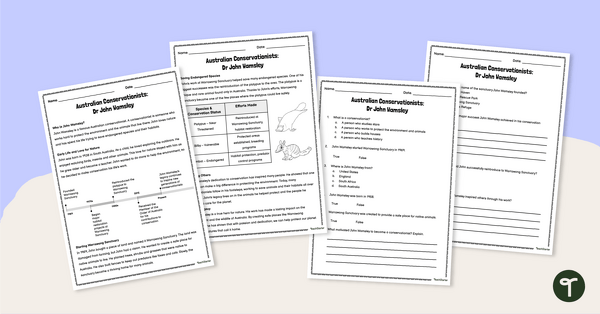
Australian Conservationists: John Walmsley – Comprehension Worksheet
Learn about Dr John Walmsley and his conservation work with this 2-page reading passage and accompanying comprehension questions.
- Plus Plan
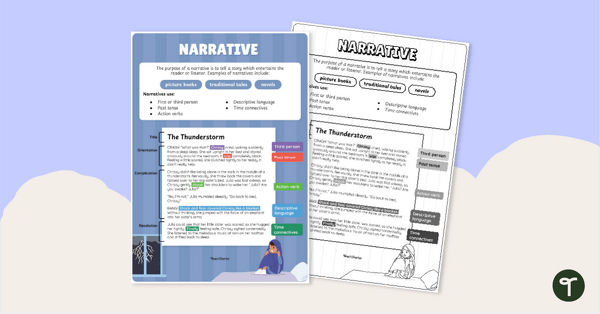
Narrative Text Type Poster With Annotations
Display this narrative text with annotations to help students identify the structure of a narrative.
- Plus Plan
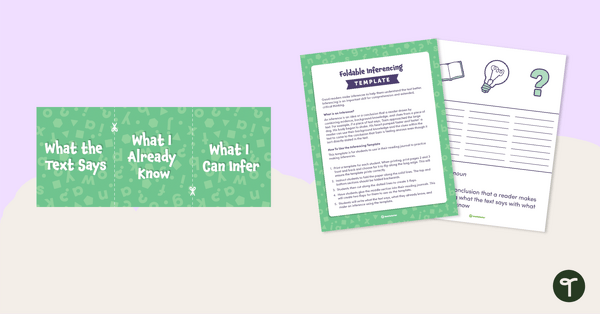
Foldable Inferencing Template
Practise making inferences with this foldable template.
- Plus Plan
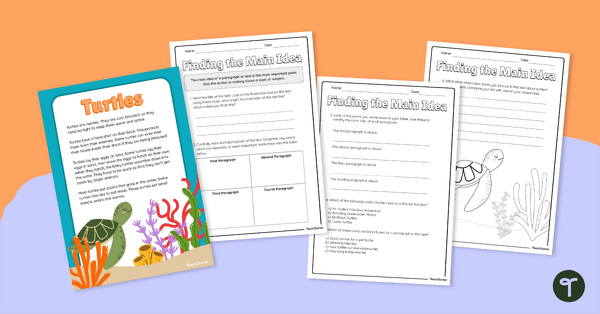
Finding The Main Idea - Comprehension Task (Turtles)
Explore the wonderful world of turtles with this comprehension task focusing on the main idea.
- Free Plan
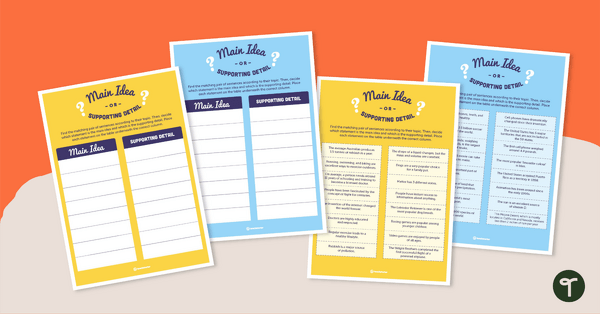
Main Idea or Supporting Detail? – Sorting Activity
An activity for students to determine which of 2 related facts is a main idea and which is a supporting detail.
- Plus Plan
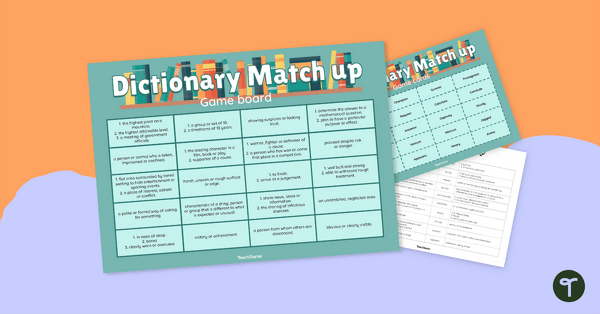
Dictionary Definitions Match Up Game
A set of 20 word cards for students to match to their definition.
- Plus Plan
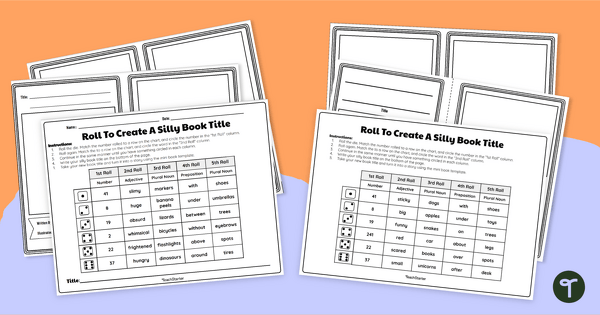
Roll to Create a Silly Book Title – Differentiated Writing Activity
Print a differentiated literacy activity using dice and a chart to create a silly book title and storybook.
- Plus Plan
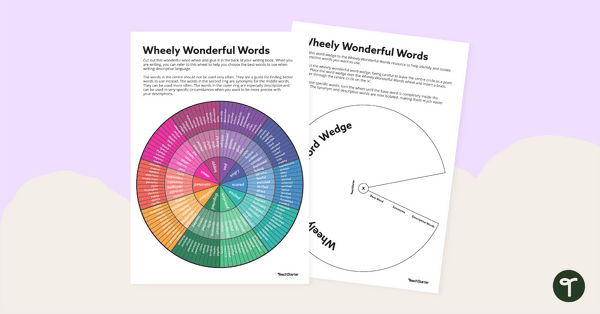
Wheely Wonderful Words – Emotional States Vocabulary
A word wheel of synonyms and similar words used to describe emotional states.
- Plus Plan

Greek and Latin Roots – Card Kaboom!
Explore Greek and Latin word origins with this hand-on card game.
- Plus Plan
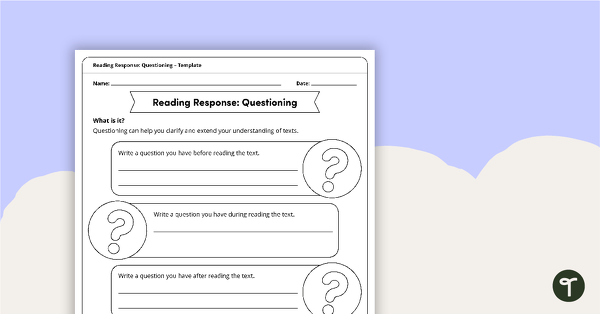
Reading Response Questioning – Template
A comprehension template for students to practise questioning.
- Plus Plan
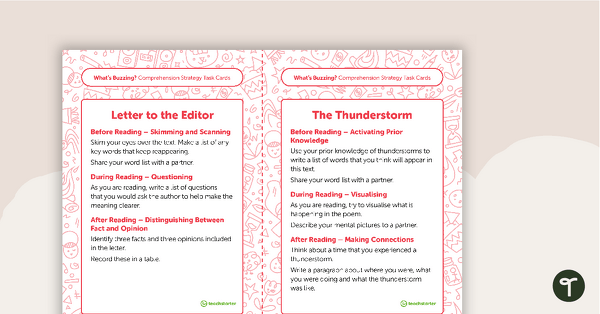
Year 6 Magazine – “What’s Buzzing?” (Issue 2) Task Cards
A set of five literacy rotation task cards to be used in conjunction with Issue 2 of Teach Starter’s Year 6 magazine.
- Plus Plan
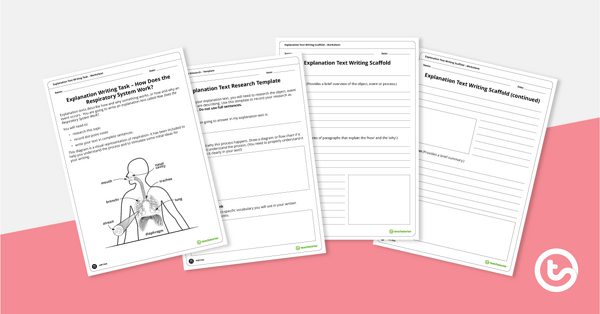
Explanation Text Writing Task – How Does the Respiratory System Work?
A scaffolded writing task for students to complete when learning about the explanation text type.
- Plus Plan
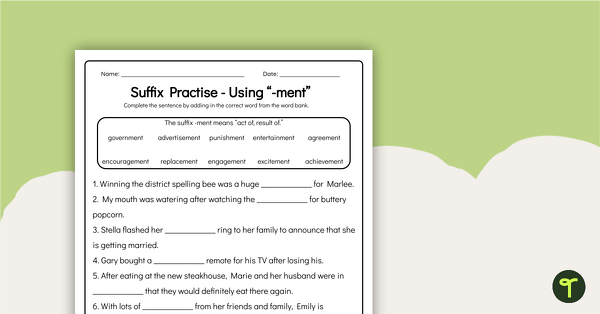
-Ment Suffixes Worksheet
Improve students' understanding of the suffix -ment with a printable suffix worksheet.
- Plus Plan
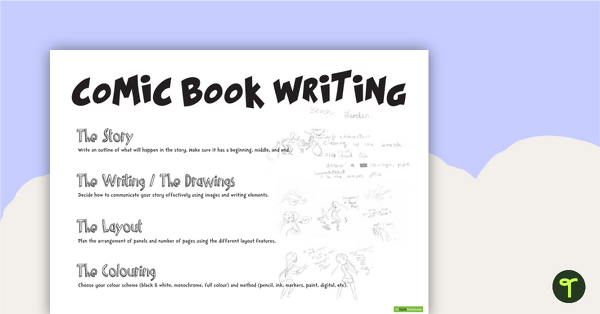
Comic Book Writing Resource Pack
9 pages of resources for creating comic books.
- Plus Plan
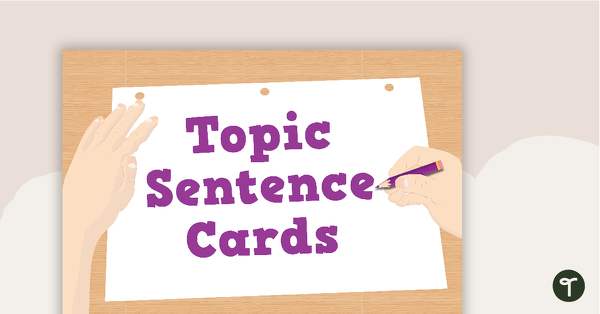
Topic Sentence Starter Cards
A pack of 32 narrative, persuasive and report writing sentence starter cards.
- Plus Plan
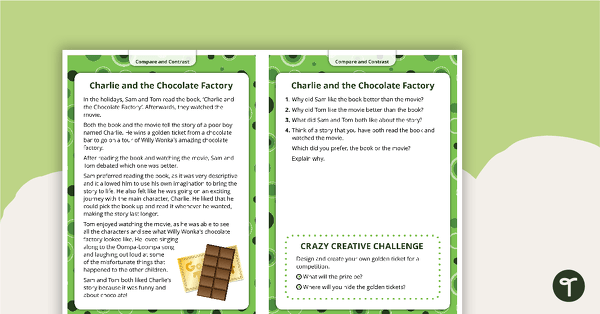
Comprehension Task Cards - Compare And Contrast
A set of comprehension task cards to help students compare and contrast when reading.
- Plus Plan
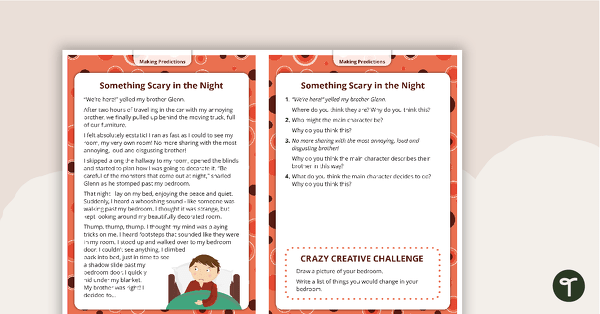
Comprehension Task Cards - Making Predictions
A set of comprehension task cards to help students make predictions when reading.
- Plus Plan
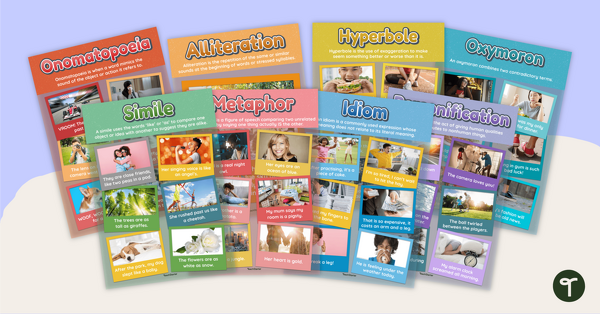
Figurative Language Poster Pack
Remind your students about the most common types of figurative language with this set of classroom display posters.
- Plus Plan
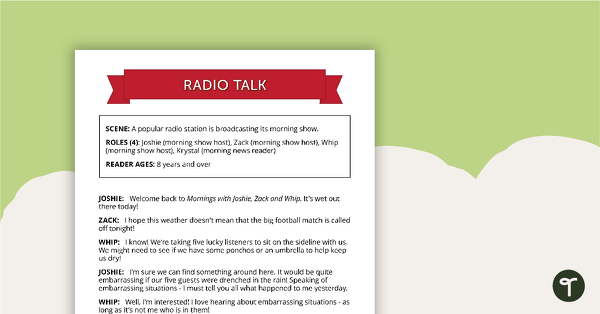
Comprehension - Radio Talk
A fun script and set of questions to help students develop reading and comprehension strategies.
- Plus Plan
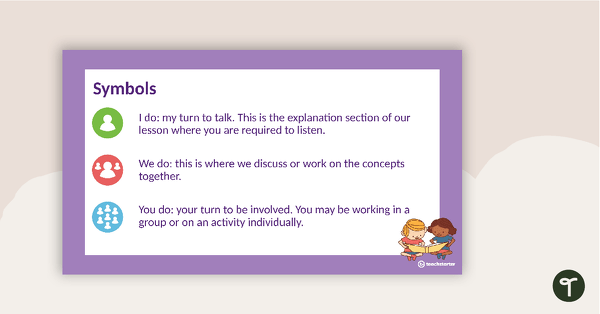
Reading Comprehension Strategies PowerPoint - Visualising
A 12 slide editable PowerPoint template explaining the reading comprehension strategy of visualising.
- Plus Plan
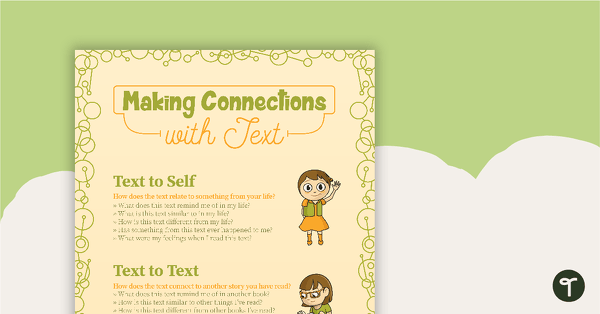
Making Connections with Text Poster
A poster showing the concepts of text to self, text to text and text to world.
- Plus Plan

Information Report Fact Files and Scaffolding Sheet
Use this set of 5 fact files and information report scaffold sheet to support your students in writing a detailed and well-structured information report.
- Plus Plan
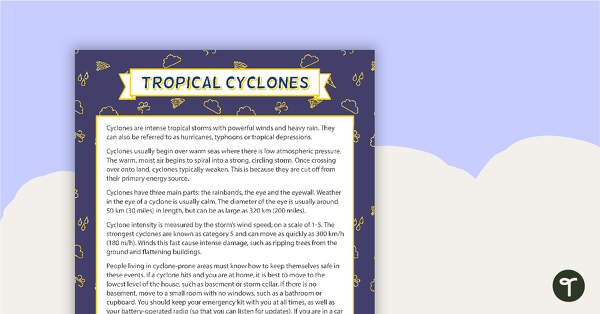
Comprehension - Tropical Cyclones
A comprehension activity about tropical cyclones.
- Plus Plan

Paragraph Study Grammar Interactive PowerPoint
Interactive PowerPoint presentation allowing teachers and students to learn and revise grammar by highlighting paragraphs.
- Plus Plan
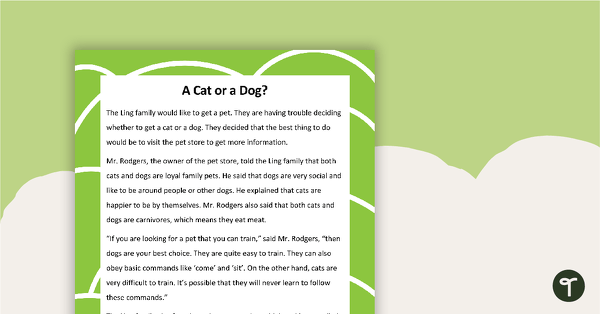
Compare and Contrast - Comprehension Task
A task to use when teaching your students reading comprehension strategies.
- Plus Plan
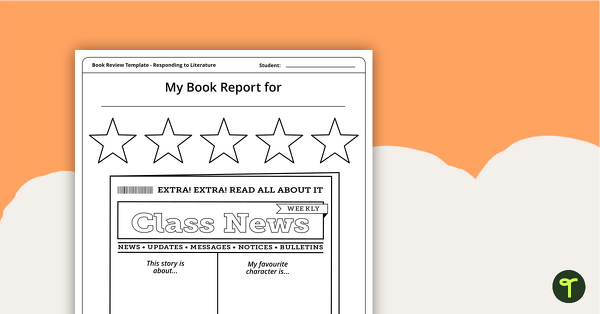
Newspaper Themed - Book Report Template and Poster
A fun newspaper themed poster with 3 book report templates to use when responding to literature.
- Plus Plan
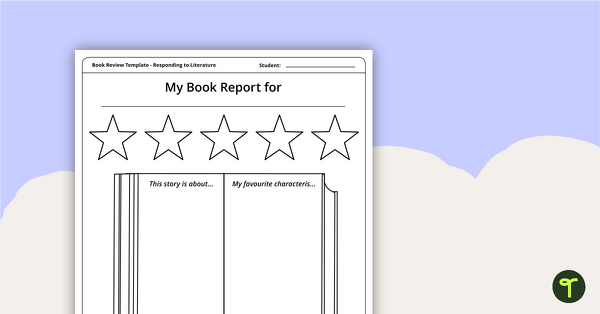
Book Worm Themed - Book Report Template and Poster
A fun book worm themed poster with 3 book report templates to use when responding to literature.
- Plus Plan
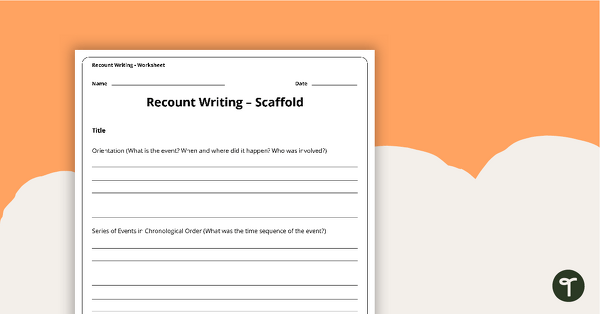
Recount Writing Scaffold
A one page scaffolding sheet which can be used to write a recount.
- Plus Plan
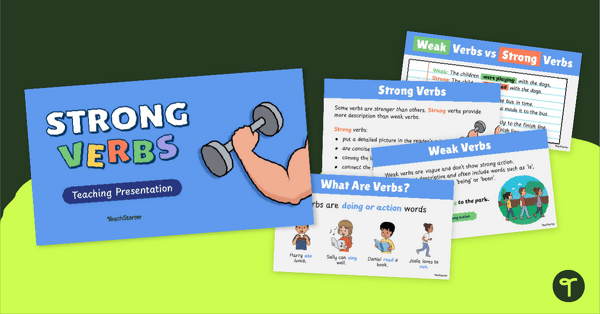
Strong Verbs Teaching Slides
Discover how to use strong verbs in sentences with this set of teaching slides.
- Free Plan
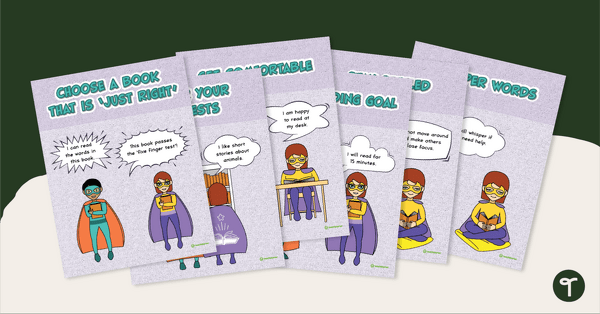
Super Stamina Reading Posters
Highlight strategies students can use to read for longer periods of time with this printable poster set for a school library or classroom.
- Plus Plan

Conjunctions Spinners (Coordinating Conjunctions, Subordinating Conjunctions, Correlative Conjunctions)
Bring some fun to your grammar lessons with these colourful conjunctions spinners! Students spin tp reveal a conjunction to use in their writing or oral language.
- Plus Plan
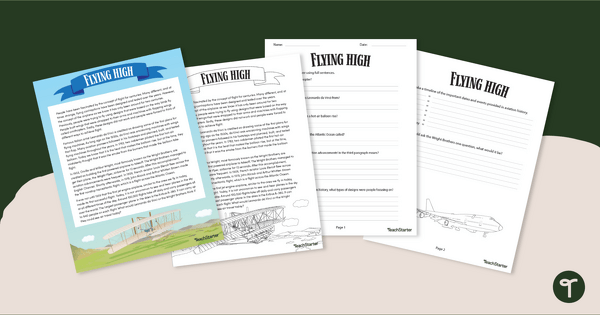
Comprehension – History of Flight Reading Worksheets
Read and learn about innovations in aviation with a printable reading comprehension activity.